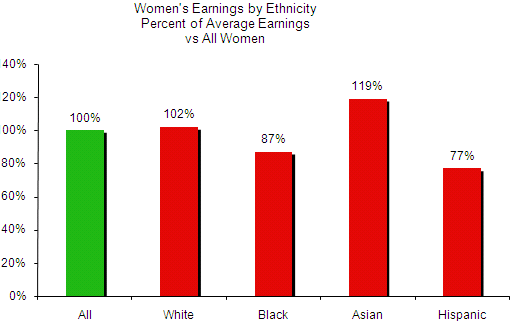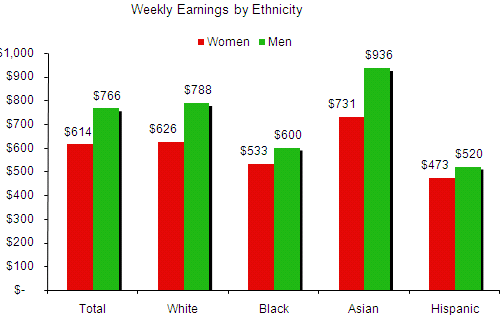IDEX Online Research: Jewelers - Target Female Self-Purchasers, Part VII
August 06, 09
The model family of the 1950s, Dad is the sole earner and Mom is at home cooking three hot meals a day, is hard to be found in the U.S. these days. In this multi-part series, we are looking at what this means for jewelers. The good news: more women than ever before work outside of the home and now have the discretionary income to buy jewelry for themselves. The opportunity: Pay attention to demographics.
Demographics Affect Women’s Earnings
America is the home of the phrase “politically correct.” Thus, it is supposed to be the home of the classless society. However, study after study suggests that consumers of certain demographic groups seem to fare better than consumers in other ethnic groups.
For example, ethnicity, education levels, and marriage have a significant impact on the level of a woman’s earnings.
Women’s Earnings Affected by Ethnicity
Among female wage earners, Asian women earn significantly more than their counterparts of any other ethnic group. White women also earn just above the national average. Both Black and Hispanic women earn substantially less than the national average. In part, this wage disparity relates to educational levels. As a percentage of the population, both White and Asian women are better-educated. This allows them to hold higher paying jobs.
However, the bottom line is this: an Asian or White woman is more likely to have discretionary income to spend on jewelry than women of other ethnicities. The reality is this: all women spend on jewelry, but Blacks and Hispanics tend to buy less expensive jewelry than others.
The graph below illustrates the disparity in women’s earnings by ethnic group in the U.S. market.

Source: BLS
As we drill down into the data which analyzes the differences between men’s earnings and women’s earnings, we find some further differences by ethnic group. These findings are from the latest data available (2007):
- Earnings differences between women and men in 2007 were widest for Asians and Whites. Asian women and White women earned just under 80 percent as much as their male counterparts. By comparison, Black women and Hispanic women had earnings that were around 90 percent of their male counterparts. This lack of disparity can be explained by the nature of the jobs that often characterize Black and Hispanic individuals – they often work at lower-paid, menial jobs.
- Asian female workers earned more than their comparable White, Black, and Hispanic colleagues. White female workers earned only 86 percent as much as Asian working females, while Black and Hispanic women earned 73 percent and 65 percent, respectively, as much as their Asian counterparts. Here’s what this means to jewelers: working Asian women represent an excellent target market.

Source: BLS